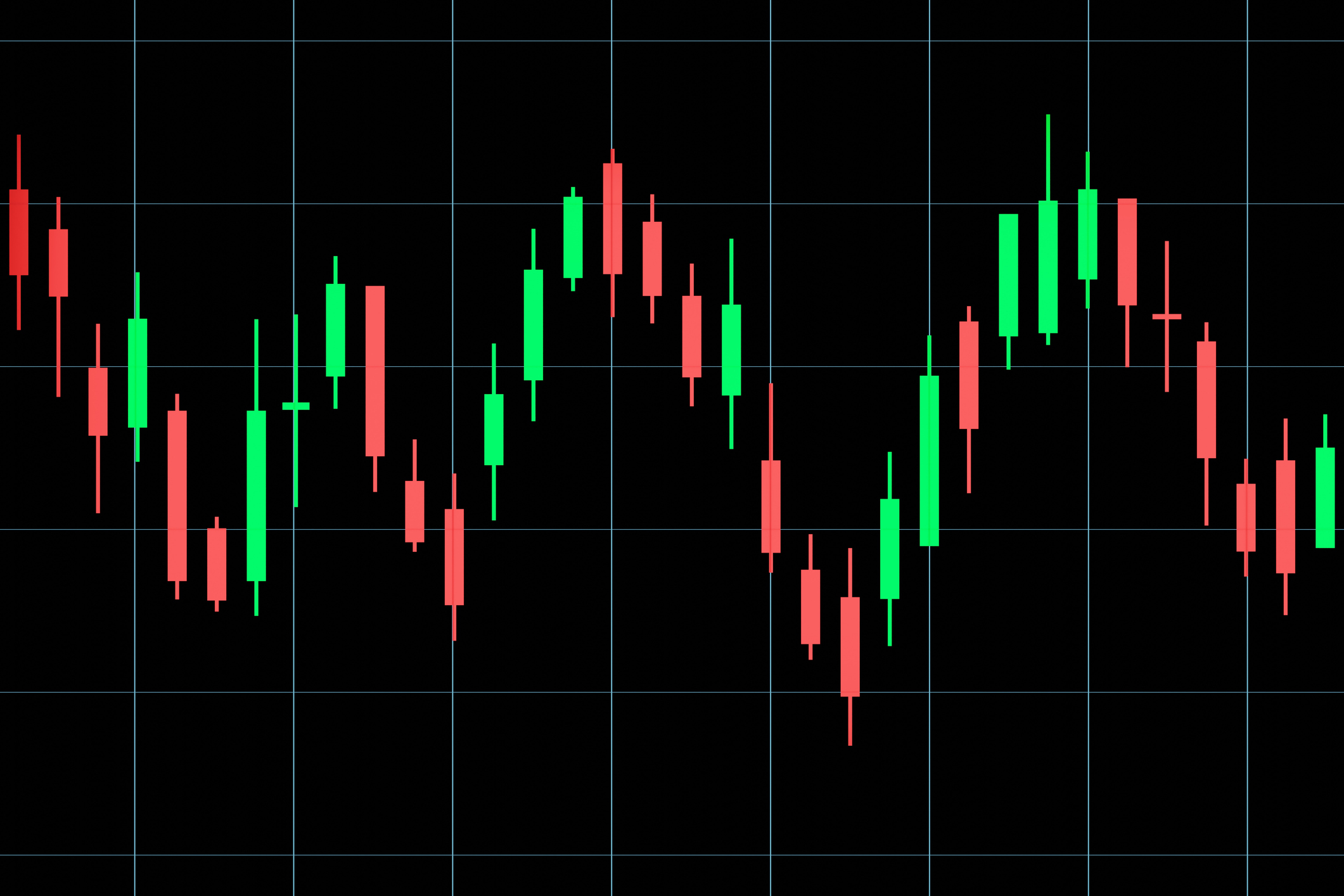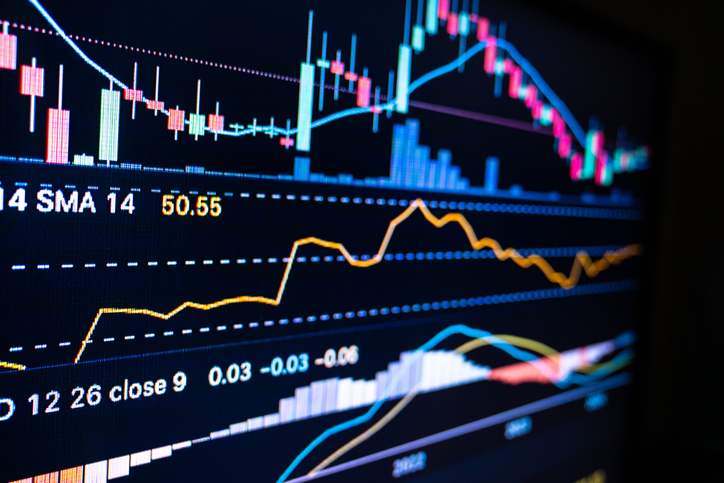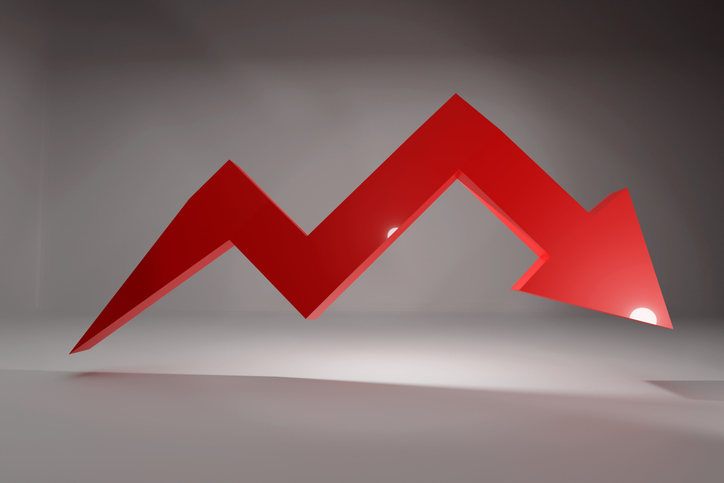Which Stocks Stayed Green as the Market Plummeted?
Only a handful of S&P 500 stocks managed to generate gains during the market's historic four-day plunge.


Only five stocks in the S&P 500 managed to stay in the green as the benchmark index fell more than 12% to wipe out $5.8 trillion in market value in its worst four-day plunge since the early days of the COVID pandemic.
Perhaps it should come as no surprise that these stocks all share one thing in common: they're all members of the defensive healthcare sector.
But before we get into which stocks managed to stay afloat during the S&P 500's biggest absolute wipeout in market cap since the 1950s, let's recap how we got here.

Sign up for Kiplinger’s Free E-Newsletters
Profit and prosper with the best of expert advice on investing, taxes, retirement, personal finance and more - straight to your e-mail.
Profit and prosper with the best of expert advice - straight to your e-mail.
The S&P 500, the main benchmark for U.S. equity performance, is still down about 14% from its February peak, hurt by uncertainty over tariffs. The market selloff accelerated between April 2 and April 8 as the White House rolled out and then paused parts of its new international trading regime.
Defensive sectors such as consumer staples, utilities and healthcare are supposed to hold up better when the market is selling off. Happily, that's what they did during those four sessions that shook the world. Be that as it may, these three sectors still suffered losses of about 7% to 8%, respectively.
That's better than the S&P 500's overall shellacking, but it still left traders' screens plastered in red.
Naturally, the Magnificent 7 stocks that did much of the bull market's heavy lifting had the farthest to fall, dragging the cap-weighted benchmarks with them. Interestingly, while the price-weighted Dow Jones Industrial Average was hardly spared damage, its most influential name actually generated the second best returns of any S&P 500 constituent during the market's historic selloff.
Have a look at the table below to see which five S&P 500 stocks managed to stay in the green as the market desperately searched for a bottom during the panic. Note that all these companies are defensive healthcare providers. And although Wall Street's recommendations on these stocks vary, UnitedHealth Group (UNH) routinely ranks among analysts' top S&P 500 stocks to buy.
Company | % price change (April 2-8) | Market cap | Average broker recommendation |
|---|---|---|---|
Humana (HUM) | 6.1 | $34 billion | Hold |
UnitedHealth Group (UNH) | 5.7 | $506 billion | Strong Buy |
Centene (CNC) | 2.8 | $31 billion | Buy (mixed conviction) |
Molina Healthcare (MOH) | 0.7 | $18 billion | Buy (mixed conviction) |
Elevance Health (ELV) | 0.4 | $98 billion | Buy (strong conviction) |
Data as of April 9, 2025, courtesy of S&P Global Market Intelligence.
Related content
Profit and prosper with the best of Kiplinger's advice on investing, taxes, retirement, personal finance and much more. Delivered daily. Enter your email in the box and click Sign Me Up.

Dan Burrows is Kiplinger's senior investing writer, having joined the publication full time in 2016.
A long-time financial journalist, Dan is a veteran of MarketWatch, CBS MoneyWatch, SmartMoney, InvestorPlace, DailyFinance and other tier 1 national publications. He has written for The Wall Street Journal, Bloomberg and Consumer Reports and his stories have appeared in the New York Daily News, the San Jose Mercury News and Investor's Business Daily, among many other outlets. As a senior writer at AOL's DailyFinance, Dan reported market news from the floor of the New York Stock Exchange.
Once upon a time – before his days as a financial reporter and assistant financial editor at legendary fashion trade paper Women's Wear Daily – Dan worked for Spy magazine, scribbled away at Time Inc. and contributed to Maxim magazine back when lad mags were a thing. He's also written for Esquire magazine's Dubious Achievements Awards.
In his current role at Kiplinger, Dan writes about markets and macroeconomics.
Dan holds a bachelor's degree from Oberlin College and a master's degree from Columbia University.
Disclosure: Dan does not trade individual stocks or securities. He is eternally long the U.S equity market, primarily through tax-advantaged accounts.
-
 Stock Market Today: S&P 500, Nasdaq Near New Highs
Stock Market Today: S&P 500, Nasdaq Near New HighsThe S&P 500 hasn't hit a new high since February. It's been since December for the Nasdaq.
-
 New Trump 'Big Bill' Incentive Could Help Donors Avoid Capital Gains Tax
New Trump 'Big Bill' Incentive Could Help Donors Avoid Capital Gains TaxTax Policy As U.S. Senate Republicans mark up their version of the One Big Beautiful Bill Act, one provision could give some donors a major tax break.
-
 Are Brighter Days Ahead for This Fidelity Health Care Fund?
Are Brighter Days Ahead for This Fidelity Health Care Fund?Health care stocks are showing signs of life after a lengthy period of underperformance. That bodes well for the Fidelity Select Health Care Portfolio.
-
 Stock Market Today: Dow Falls 817 Points as Bond Yields Rise
Stock Market Today: Dow Falls 817 Points as Bond Yields RiseFinancial markets are once again focused on Washington, D.C., but taxes, not tariffs, are driving recent price action.
-
 Stock Market Today: Investors Look on the Bright Side
Stock Market Today: Investors Look on the Bright SideA generally good week closes on another positive note, as investors, traders and speculators look for fresh catalysts.
-
 Stock Market Today: Stocks Climb More Walls of Worry
Stock Market Today: Stocks Climb More Walls of WorryVolatility is back in a normal range, and the trend for the main equity indexes remains positive despite specific and general headwinds.
-
 Stock Market Today: UnitedHealth Drags on Dow After CEO Splits
Stock Market Today: UnitedHealth Drags on Dow After CEO SplitsUNH created headwinds for the price-weighted Dow on news that its embattled CEO, Andrew Witty, is stepping down.
-
 Stock Market Today: Dow Drops 971 Points as Powell Pressure Ramps Up
Stock Market Today: Dow Drops 971 Points as Powell Pressure Ramps UpPresident Trump is increasing his attacks against Jerome Powell, insisting the Fed chair cut interest rates.
-
 Stock Market Today: No 'Powell Put'? No Problem
Stock Market Today: No 'Powell Put'? No ProblemInvestors, traders and speculators look beyond both another Trump post and more signs of slowing economic activity.
-
 Stock Market Today: Tariff Talks Drive Another Up-and-Down Day
Stock Market Today: Tariff Talks Drive Another Up-and-Down DayTrade war negotiations are happening, but the "fear gauge" is gyrating, and investors, traders and speculators are still searching for signs of a bottom.